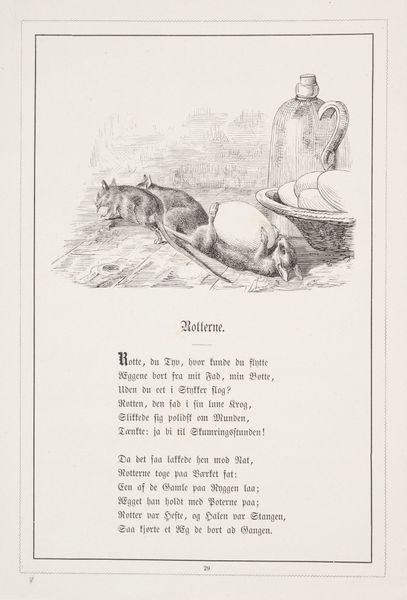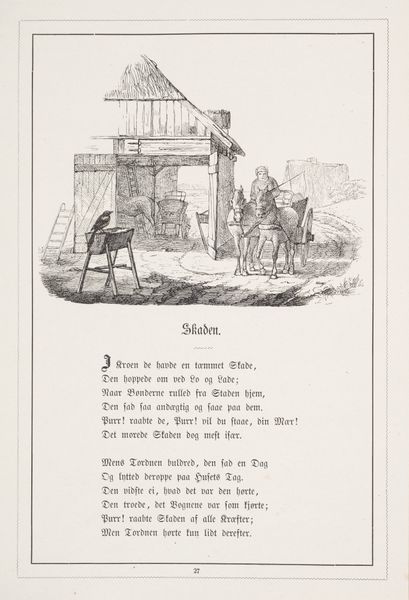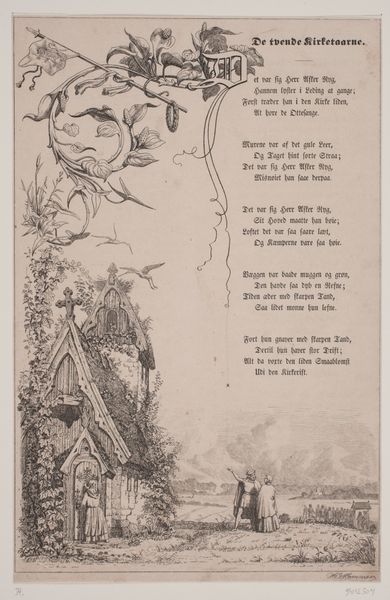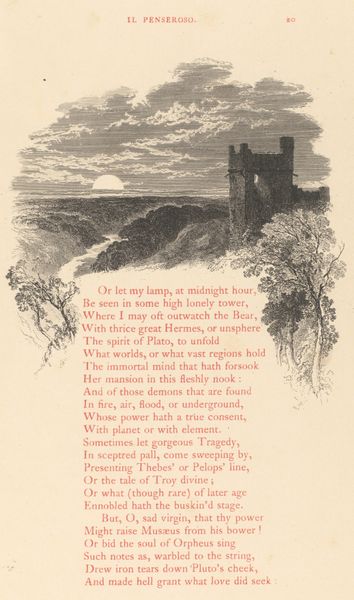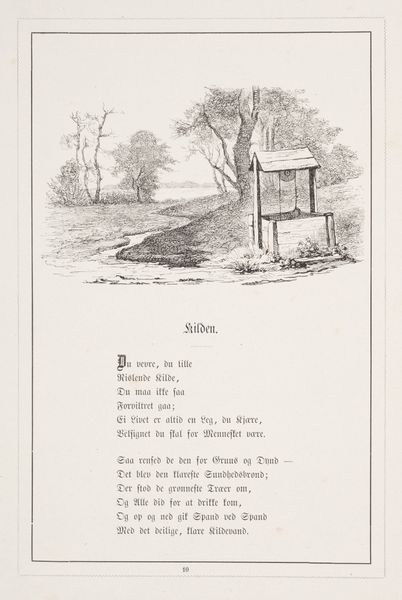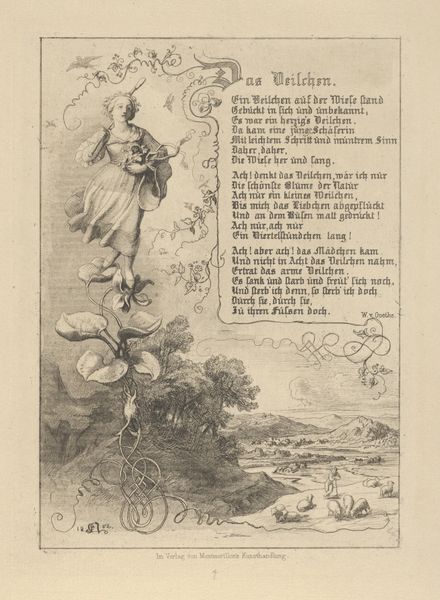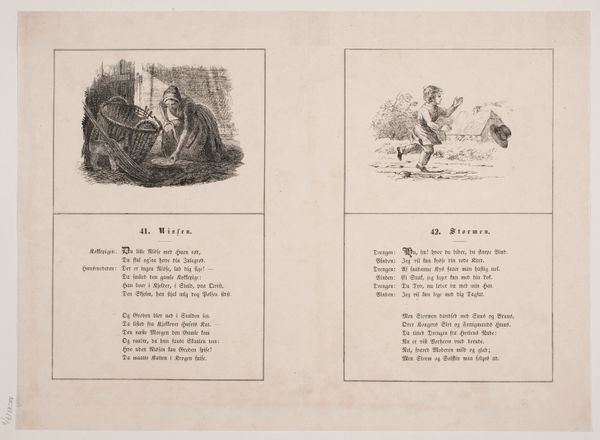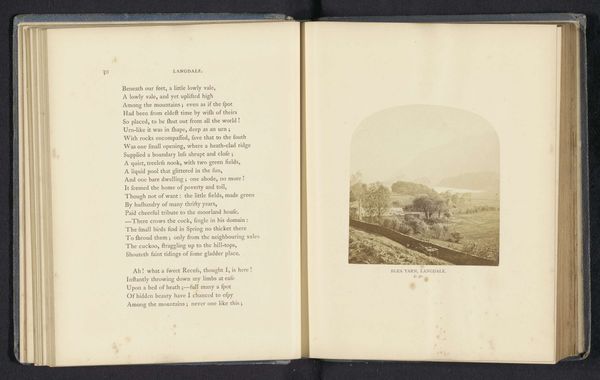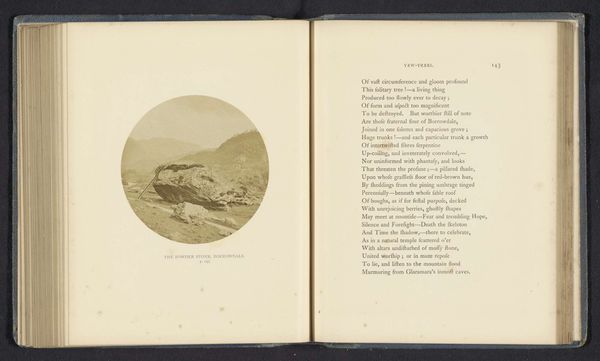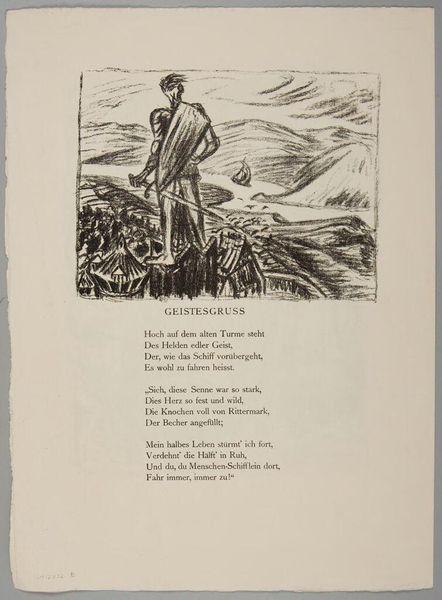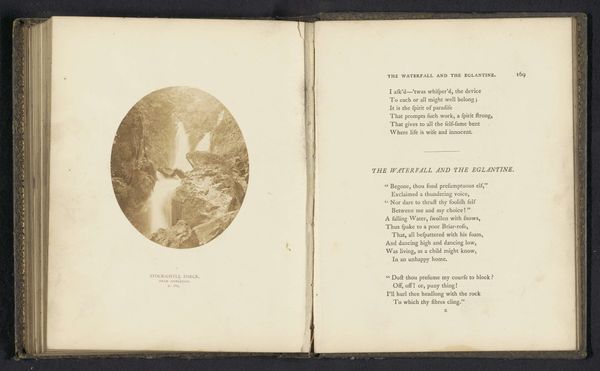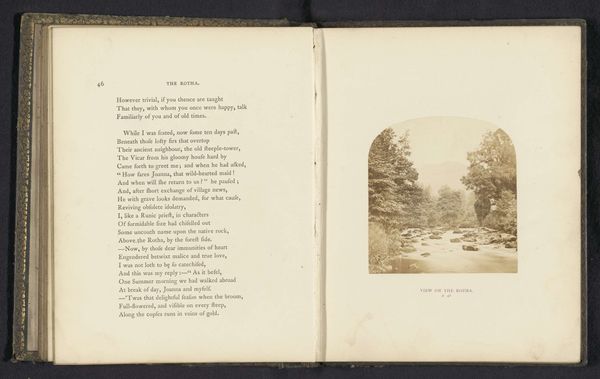
drawing, print, paper, ink
#
drawing
#
narrative-art
# print
#
landscape
#
paper
#
ink
#
line
Dimensions: 220 mm (height) x 147 mm (width) (bladmaal)
Curator: Here we have "The Seagull," an 1866 illustration by H.P. Hansen for H.V. Kaalund's "Fables for Children," created using ink on paper. Editor: It's stark, but rather charming, wouldn’t you say? The lines are so delicate, creating a sense of lightness. I particularly like the contrasting textures—the solid land against the turbulent sea. Curator: Hansen's fable tells a narrative—a cautionary tale where the seagull's wisdom is ignored by a boastful ship captain, leading to predictable disaster. This speaks volumes about the era’s social hierarchies and the dismissal of marginalized voices. What are the power dynamics at play here, and whose voices are being silenced? Editor: From a compositional viewpoint, the placement of the seagull at the top immediately draws the eye, which guides it through the landscape, down to the writing, and finally out towards the boat—a nice sense of depth despite the stark contrast between foreground and background. There’s great dynamism in those swooping, energetic lines defining the landscape. Curator: It's interesting to consider this illustration within the broader context of Danish nationalism and identity formation during the 19th century. These fables often reinforced specific cultural values, and this particular piece touches upon themes of human arrogance versus the wisdom of nature. Editor: I'm drawn to the way the line work varies. The dense hatching gives the impression of mass and texture to the hill, and that contrasts sharply with the sparser lines suggesting movement and atmosphere on the water, emphasizing its rippling nature. Curator: Yes, and one must question the absence of people depicted in the illustration save for that implied boat, and consider to what degree it plays into romantic ideals that serve specific societal agendas. Where do we, as the audience, fit into this story? Editor: Well, considering the overall formal impact and looking closer to the artwork, I do find Hansen's precise lines in the artwork to be quite striking. I feel like it contributes greatly to how my eye processes space and distance within the framed fable. Curator: The dialogue between nature and civilization remains vital in today's world, too. It offers us valuable opportunities to question established orders. Editor: An interesting interpretation indeed.
Comments
No comments
Be the first to comment and join the conversation on the ultimate creative platform.
